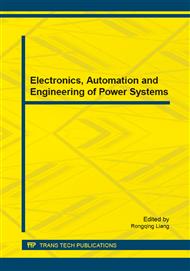p.495
p.499
p.504
p.508
p.515
p.522
p.526
p.530
p.534
Study on the Prediction Meth of Automobile Braking Distance Based on Artificial Neural Network
Abstract:
The automobile braking distance is one of the important indexes to measure the brake performance, so the study of automobile braking distance is very important. Domestic and foreign scholars research on automobile brake performance and braking distance, and achieved fruitful results, but there are only little research on the braking distance predicting of the car. In the paper, the process of automobile braking, effect of the braking distance, the influence factors and the road adhesion coefficient are studied. In the paper, it also discussed the effective methods to calculate the braking distance. On these basses, the author puts forward the prediction model of automobile braking distance with artificial neural network method. In this model, the author takes the running state and parameters of the car as samples for the input and output. After training, the author gets the curing prediction model based on each layer of network weights and threshold of the neural network.
Info:
Periodical:
Pages:
515-521
Citation:
Online since:
February 2015
Authors:
Keywords:
Price:
Сopyright:
© 2015 Trans Tech Publications Ltd. All Rights Reserved
Share:
Citation:


